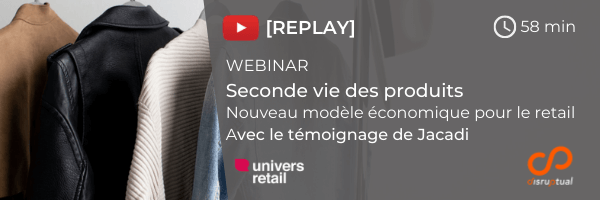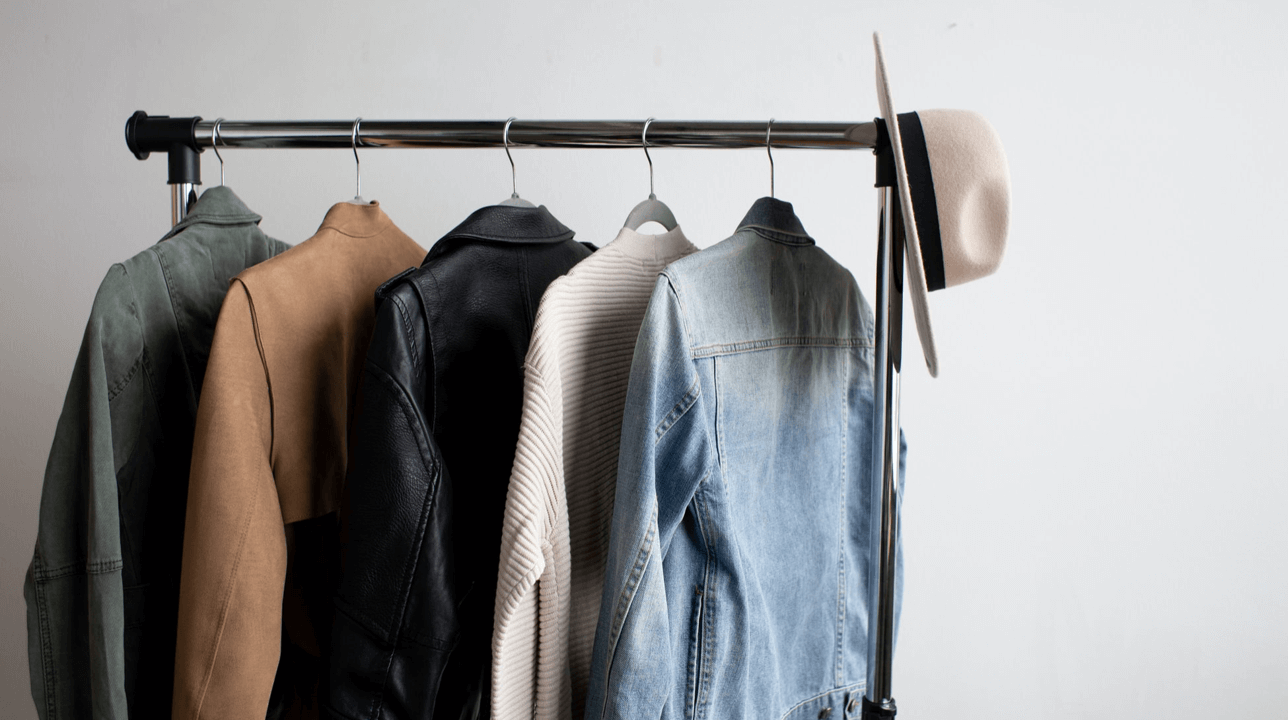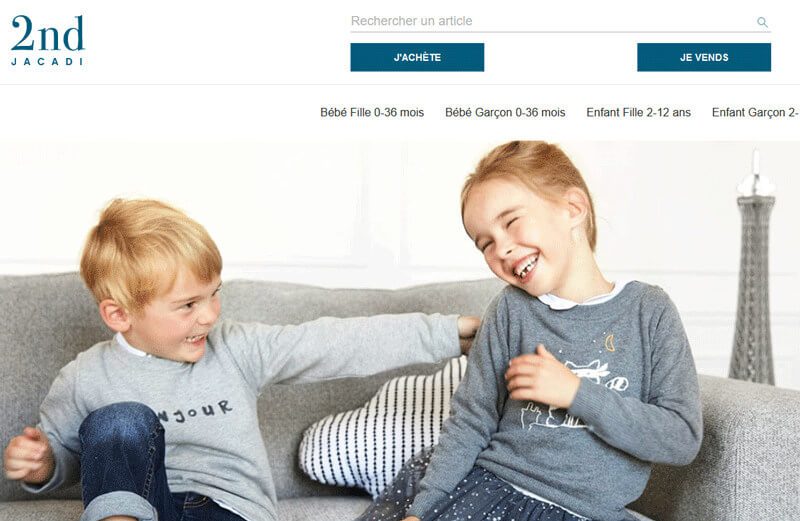The second-hand market
This has been the case for some ten years now. The second-hand market continues to grow, with an estimated volume of 7 billion euros at the start of 2019 (according to Xerfi). The second-hand fashion market alone is worth 1 billion euros in France.
The trend is no longer just driven by bargain hunters and vintage fans, but by an entire generation, including Millennials, who are demanding more responsible consumption.
Why buy new and pollute the planet even more by producing when you can recycle so easily? This market offers genuine ethical, ecological, social and economic satisfaction.
In the fashion sector, the second-hand market has literally exploded in recent years, although all sectors are affected. This rise has been accelerated by digital, and in particular by mobile apps.
Historically, Le Bon Coin, today it's Vinted, a specialist in second-hand goods between private individuals, which is taking the market by storm, generating sales of 1.3 billion euros. These results are perfectly explained by the strong appetite for fashion and the marked awareness of sustainable development and waste reduction issues among the French, who lead the way in Europe (according to Business Insider).
(Ready-to-wear) chains adapt
Forced to acknowledge that these transactions are completely out of their hands, retailers have become aware of the challenges imposed by this global phenomenon.
At first, they rather discreetly displayed their CSR (Corporate Social Responsibility) approach by offering discount vouchers for any old shoes or worn-out clothes returned to the store.
But we had to look further ahead to regain control of thecircular economy and seize these opportunities.
Large retailers and family-run businesses alike have taken the plunge, selling second-hand goods alongside their traditional range. The development of platforms, modified merchandising, communication in favor of sustainable purchasing: there's no shortage of good arguments in favor of this diversification.
Here are a few examples:
- The Cdiscount case: an online thrift shop
June 2020, the e-tailer already present on the second-hand market expands its offer of second-hand products by opening a second-hand fashion space: nearly 20,000 items, from over 60 brands available online.
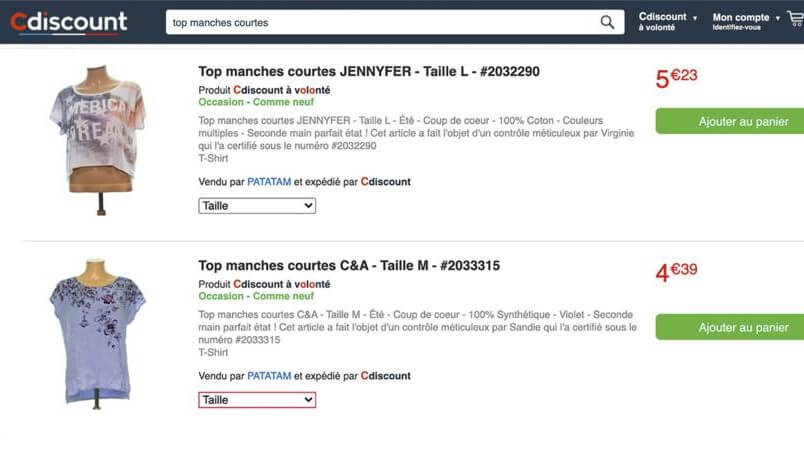
Screenshot of second-hand clothes sold on the Cdiscount website - photo credit © Cdiscount
- The Auchan case: a new offer in the textile department
February 2020, this is also the case for Auchan, which is taking the physical plunge by deploying second-hand fashion corners! Currently being tested in 5 hypermarkets, second-hand clothing is now available. For customers: the offer is competitive thanks to fixed prices (T-shirts are offered at 3 euros, skirts at 5 euros, pants and sweaters at 8 euros and coats at 15 euros, all brands included). For sellers, or rather "donors", a voucher for use in the store's textile department.
The eco-responsible approach could be extended depending on test results.
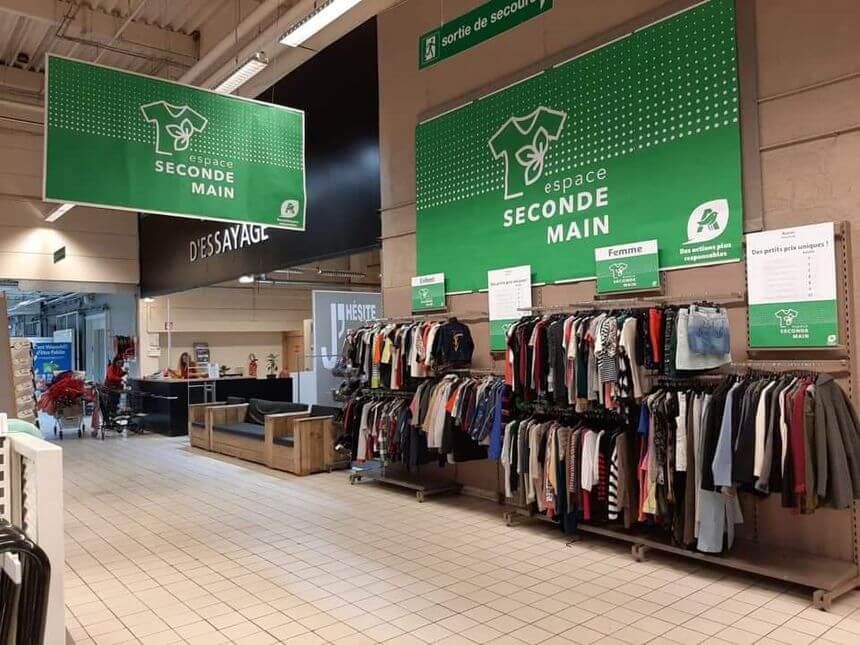
Auchan offers second-hand textile spaces in five hypermarkets in France - photo credit © LSA
- The Jacadi case : a second life for "your Jacadi wardrobe".
September 2020, the children's fashion brand launches its dedicated second-hand website. Called " Seconde Vie ", the platform allows users to sell and/or buy Jacadi clothes that have already had a first history. The brand takes care of its wording by presenting second-hand items as "beautiful Jacadi clothes with stories".
This principle is fully optimized by the omnichannel nature of Jacadi, with sellers able to publish their adverts online and select the Jacadi boutiques where they wish to drop off their items. The items sold are then deposited in the selected boutique, which certifies their quality. The sale is rewarded with a Jacadi e-gift card.
Buyers have ten days to collect their purchases from the selected store.
Home page of the "Seconde Vie Jacadi" website - photo credit © Jacadi
A promising future
Different models are possible and adaptable to achieve this diversification - the development of a second-hand offer in the form of corners, online, both for an omnichannel strategy - there are many ways to promote second-hand.
It is in this hyper-dynamic and buoyant context that Disruptual has decided to develop a white-label offering that can be adapted to each brand. This platform, btoc or ctoc, enables the brand to "recover" shares of this parallel market.
Their first job is to create solutions adapted to putting people in touch with each other, and they naturally approached brands such as Cyrillus, Maison 123, Promod and the Ghanty group to integrate their technology.
Univers Retail supports you in these projects, which are perfectly in tune with the times, to optimize development and manage change with expertise and agility.
By Sarah Carbel
Read more
Watch our webinar on the second life of products > access the replay
